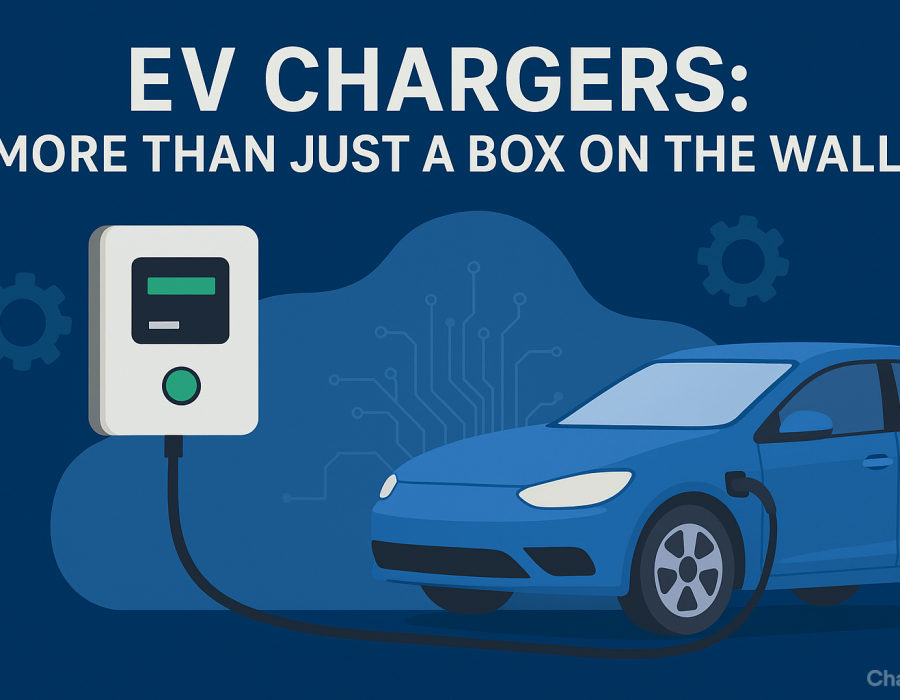When most people picture an EV charger, they imagine a plain box on the wall or a tall unit in a parking lot. Plug in the car, wait, and you’re good to go—right? In reality, an EV charger is far more complex. It’s not just about electricity flowing through a socket; it’s a fusion of robust hardware and intelligent software. Without both working hand in hand, the EV charging experience simply doesn’t hold up.
Why Hardware Still Matters
In tech discussions, software often steals the spotlight. But when it comes to EV charging, hardware is where it begins. The cables, connectors, contactors, cooling systems, and protective enclosures determine whether a charger can withstand real-world conditions.
In India, those conditions are tough—scorching summers above 45°C, heavy monsoon rains, dust storms, and unpredictable voltage fluctuations that could destroy poorly built systems.
If a charger isn’t built with reliable materials, strong insulation, and safety-tested components, no amount of software can compensate. That’s why Plugzmart designs hardware specifically for Indian environments—reinforced enclosures, fail-safe relays, and durability tested in extremes. Whether it’s a basement parking lot in Chennai or a remote highway in Rajasthan, the hardware foundation ensures uninterrupted performance.
Software: The Brain of the Charger
While hardware delivers power, software makes the process intelligent. The moment you plug in, a silent exchange happens between the car, charger, and backend system. Authentication, charging speed, billing, and load management—all of this is managed by software.
Plugzmart chargers operate on OCPP-based protocols, making them open, interoperable, and flexible for multiple Charge Point Operators (CPOs). Beyond that, the software enables remote monitoring, predictive maintenance, and real-time insights. Operators can resolve issues before they become failures, ensuring higher uptime, smoother driver experiences, and stronger ROI for businesses.
Why Balance is Everything
A charger with strong hardware but weak software quickly feels outdated. On the other hand, advanced software on flimsy hardware collapses under heat, rain, or electrical stress. The true game-changer is balance—hardware and software built to complement each other.
That’s exactly Plugzmart’s approach: rugged, field-tested chargers tailored for Indian conditions, combined with adaptive software that scales and evolves with technology. This balance ensures compatibility not just for today’s EVs but also for future vehicles, faster charging standards, and smarter grids.
What This Means for India’s EV Future
As EV adoption spreads across Tier-2 and Tier-3 cities, charging solutions must go beyond aesthetics and specifications. They must be reliable, cost-effective, and easy to operate. At the heart of this shift is trust:
- Drivers need chargers that work every time.
- Businesses need investments that won’t turn into maintenance nightmares.
- Cities need infrastructure that grows with demand.
Plugzmart proves that when hardware strength and software intelligence work in sync, EV charging becomes reliable, efficient, and future-ready. India isn’t just keeping up with global EV trends—it’s preparing to lead them.
FAQs
1. Why is hardware important in EV chargers?
Hardware ensures durability and safety. Components like cables, connectors, and enclosures protect the charger against heat, rain, dust, and voltage fluctuations—especially critical in Indian conditions.
2. What role does software play in EV charging?
Software manages the “smart” side of charging. It handles authentication, billing, charging speed, load management, and enables features like remote monitoring and predictive maintenance.
3. Can Plugzmart chargers work with other charging networks?
Yes. Plugzmart chargers use OCPP-based communication protocols, which make them open and interoperable with multiple Charge Point Operators (CPOs).





Comments